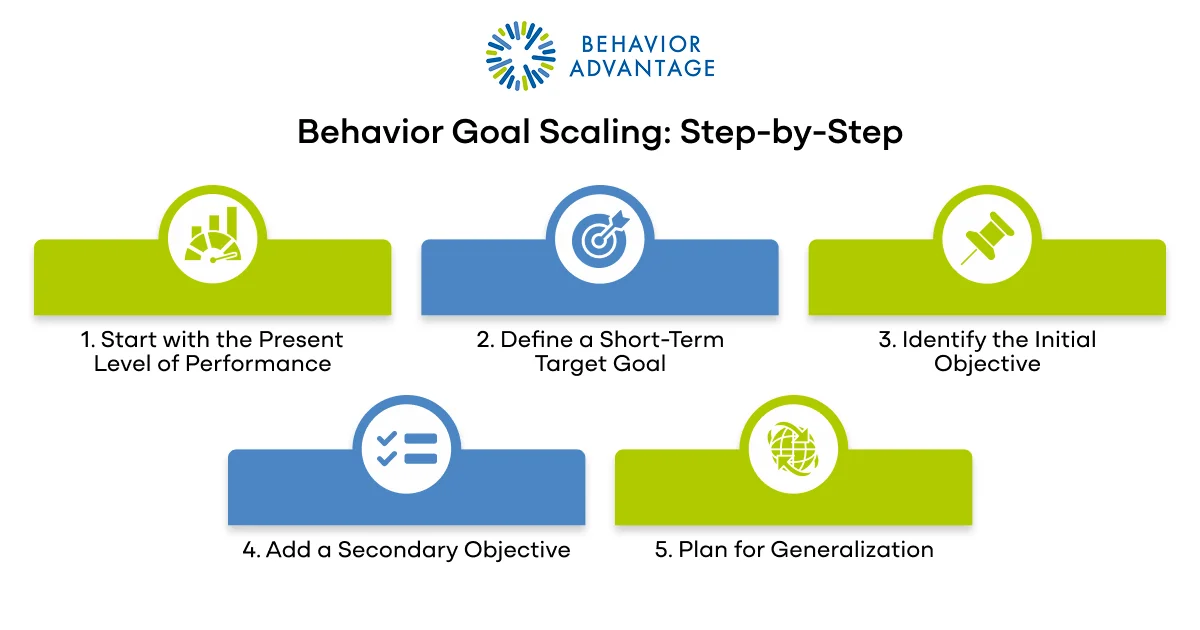Setting clear, meaningful goals is one of the most powerful tools we have for behavior change. Whether you’re trying to build healthier habits or helping a student develop positive behaviors, research consistently shows that goal setting increases motivation, creates focus, and improves outcomes. The key is not just having a goal—but designing it in a way that encourages follow-through and real progress.
In education, Behavior IEP Goals can be just as transformative—as long as we apply the same principles that make goal setting effective in any context. That means goals must be:
- Specific and measurable
- Grounded in realistic timelines
- Tied to meaningful outcomes
- Anchored in consistent action steps and systems of support
Download our free Behavior IEP Goal Template

And just as important as the goals themselves is writing the IEP goals themselves. When teams come together to collaboratively identify priorities, discuss present levels, and align on expectations, it leads to stronger implementation. A team-based approach improves consistency across staff, helps ensure interventions are well matched to student needs, and gets everyone moving in the same direction with a shared understanding of what success looks like.
If you want to find out more about how to organize your team, check our article dedicated to effective MTSS teams.
The Power of Behavior Goal Scaling
One team-based approach we recommend for writing IEP goals is Behavior Goal Scaling. This strategy helps educators design goals that are realistic, dynamic, and tied directly to intervention planning. Behavior Goal Scaling can be used before or after a behavior plan is written, and it serves as both a planning and progress-monitoring tool.
Here’s why it’s so effective:
- It gets the team aligned on what behavior change actually looks like in the real world
- It encourages the team to break down the path to success into manageable, observable steps
- It helps everyone monitor progress more effectively—whether you’re collecting formal data or not
Behavior Goal Scaling also reinforces a few critical truths about behavior change:
- Behaviors don’t change overnight
- Change happens gradually, through consistent practice and support
- Recognizing small wins early on builds momentum
- Success comes from shaping behavior over time in a positive, consistent way across all team members
By walking through this process together, the team isn’t just writing an IEP goal—they’re building a shared strategy for how to implement the plan, recognize progress, and adjust support when needed. That clarity and consistency is often the difference between a goal that works and one that ends up forgotten.
Behavior Goal Scaling: Step-by-Step
Here’s how Behavior Goal Scaling works:
1. Start with the Present Level of Performance
Where is the student today? Use observable, specific language. If you’re collecting data, include it. If not, rely on team observations using clear ABCs (Antecedent–Behavior–Consequence).
Example: During class, when presented with a non-preferred academic task, Shane has never requested and utilized a 5-minute break using appropriate and respectful communication with his teachers.
2. Define a Short-Term Target Goal
Instead of trying to predict where the student will be in 12 months, ask: Where would we hope to see them in 8 weeks if the plan is working? This encourages realistic expectations and gives the team something to work toward now.
Example: By the end of March, when asked to complete a non-preferred academic task in math class, Shane will request a 5-minute break and return on time in 4 out of 5 opportunities, using agreed-upon communication without being argumentative.
3. Identify the Initial Objective
What would initial progress look like? Set a first step that the student and team can achieve to build confidence and momentum.
Example: Before February, Shane will work with his counselor to coordinate a meeting with his math teacher to discuss, role-play, and agree on how to request a 5-minute break during lessons if needed.
4. Add a Secondary Objective
Once the student begins making progress, what’s next? Continue shaping behavior by setting the next expectation.
Example: By the end of February, when given a non-preferred task in math class, Shane will follow prompts or reminders to request and take a 5-minute break in 2 out of 5 opportunities. (Note: Even if Shane refuses in the moment but agrees to process afterward with the teacher, this can still be counted as progress.)
5. Plan for Generalization
If the student meets or exceeds the target goal, what’s next? How can we transfer the skill to other settings or routines?
Example: If successful in math, generalize the plan to language arts and science classes where Shane also struggles.
If you want to find out more about writing IEP Goals, our IEP Goal Bank is an excellent start!

Why This Approach Works
When teams scale and write IEP goals in this way, they’re not just writing down a destination—they’re mapping out the path. They’re identifying how to teach the behavior, how to track it, how to respond when things don’t go as planned, and how to keep everyone—including the student—motivated. Check out our guide for tips on how to organize your MTSS meetings!
And importantly, whenever possible, this approach can and should include the student and their family, especially for middle and high schoolers. Involving students in goal development:
- Increases their buy-in
- Helps them develop self-advocacy skills
- Builds ownership of their progress
- Supports long-term independence, social responsibility, and employability
At Behavior Advantage we can offer your team effective solutions that will provide your students with excellent behavior support!










